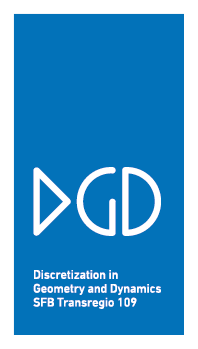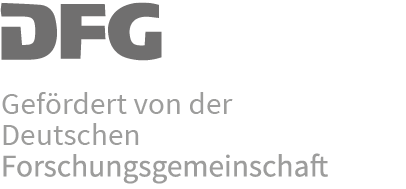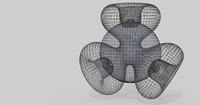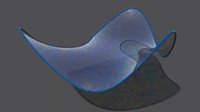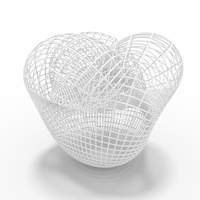Kusner Surfaces
Felix KnöppelMedia
Description
In $1987$, Rob Kusner gave an explicit formula for complete minimal surfaces with ends [1]:
Let $p\in \mathbb{N}$, $r=2\sqrt{2p-1}/(p-1)$ and $z\colon \mathbb{S}^2\rightarrow \mathbb{C}$ be the stereographic projection. Then the Kusner surfaces are obtained by the map $$\mathrm{Kus}_p\colon \mathbb{S}^2\rightarrow \mathbb{R}^3, \mathrm{Re}\left( \Phi_p \right)\,,$$ where $\Phi_p$ is given by $$\Phi_p = \frac{i}{z^{2p}+rz^p-1}\left( z^{2p-1}-z, -i(z^{2p-1}+z), \tfrac{p-1}{p}(z^{2p}+1) \right)\,.$$
By identification of antipodal points of $\mathbb{S}^2$, i.e. considering $K_p$ as a mappping from $\mathrm{R}P^2$ this becomes an immersion.
The integer $p$ controls the symmetry of the immersed surface. For visualization purposes we have cut out disks around the poles of $\mathbb{S}^2$.
Interestingly, for $p=3$ a post-composition with a suitable sphere inversion gives Boy's surface. Varying truncation of $\mathbb{S}^2$ gives nice visualizations as seen in the gallery.
References
-
Rob Kusner.
Conformal Geometry and Complete Minimal Surfaces.
Bull. Amer. Math. Soc, 1987.
dgd:497.
